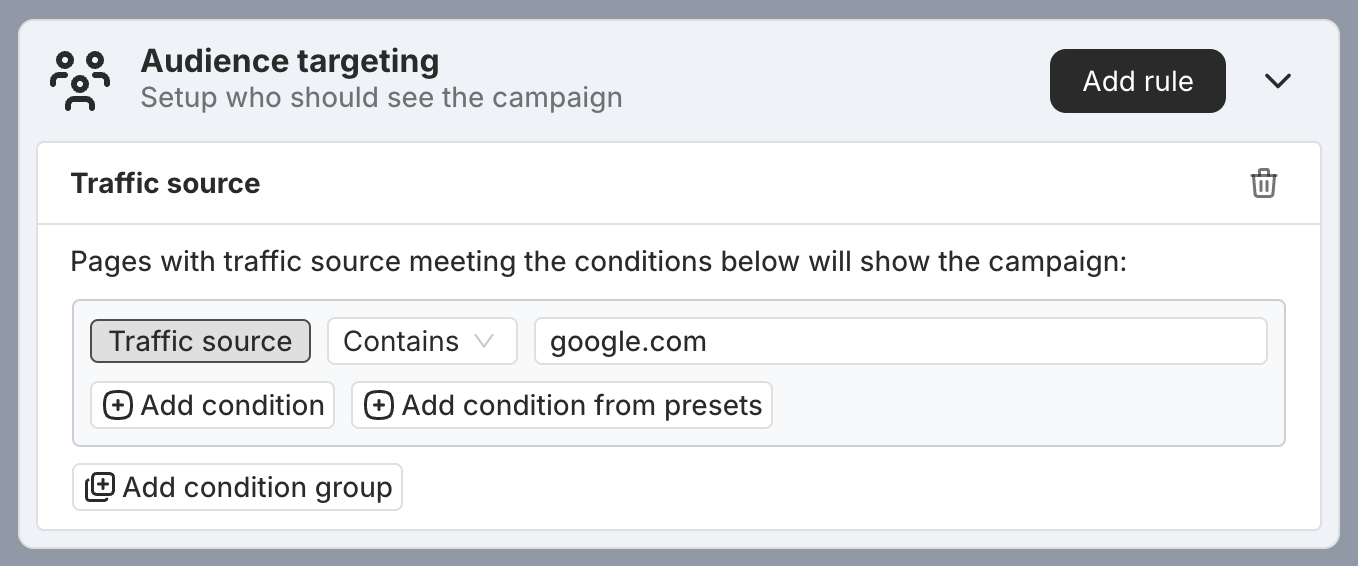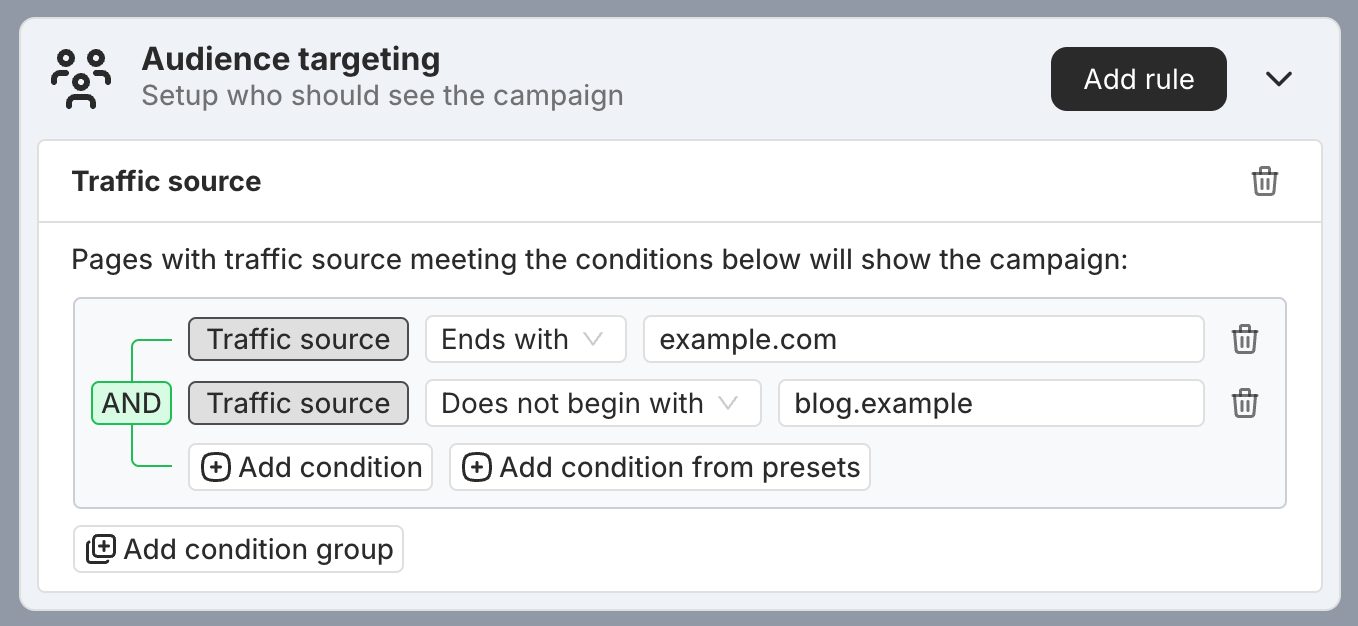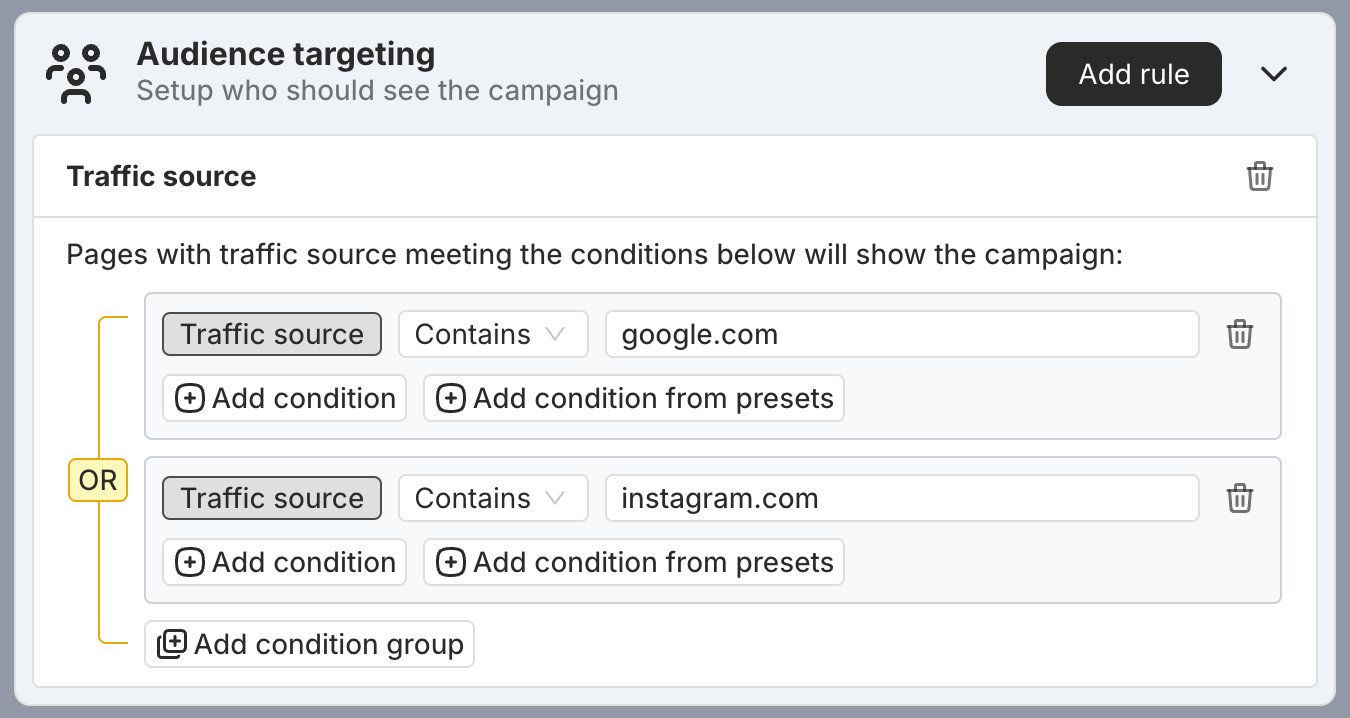Traffic source targeting lets you show different campaigns based on where your visitors come from—like Google Ads, Instagram, or a partner’s website. It helps you tailor your message depending on the source—for example, offering a discount to users from an ad campaign or welcoming visitors from a partner’s blog with related content.
Note: We use the "referrer" to determine the visitor’s traffic source.
With PageUni apps, setting up traffic source targeting is quick and easy. You can define source rules with just a few clicks.
Check out this guide to learn how to add a traffic source targeting rule to your campaign.
Once you’ve added the targeting rule, you can set how it checks the traffic source. Traffic source targeting uses targeting rule conditions to define when the rule should apply. Learn more here.

A traffic source targeting rule is made up of one or more condition groups. These groups use OR logic—if any group passes, the targeting rule is matched. Inside each group, conditions use AND logic—all conditions must be met for that group to pass.
Here are a few real-world examples to help you better understand how it works.
Example 1: The visitor’s traffic source must include "google.com." This is typically used to show campaigns only to visitors coming from Google pages, like a Google search results page.

The following traffic sources will pass the targeting rule:
-
https://www.google.com/
-
https://google.com/
The following traffic sources will not pass the targeting rule:
-
https://www.facebook.com/
-
https://reddit.com/
Example 2: The visitor’s traffic source must end with "example.com" and must not start with "blog.example." This lets you filter traffic from a specific site, so the campaign only shows to visitors coming from sources other than "blog.example.com."

The following traffic sources will pass the targeting rule:
-
https://www.example.com/
-
https://example.com/
-
https://video.example.com/
The following traffic source will not pass the targeting rule:
- https://blog.example.com/
Example 3: The visitor’s traffic source must contain either "google.com" or "instagram.com." This is commonly used when you’re running ads on both Google and Instagram, and want to target visitors coming from those campaigns.
In this setup, there are two condition groups connected by OR. The rule is matched if either group meets all of its conditions.

The following traffic sources will pass the targeting rule:
-
https://www.google.com/
-
https://google.com/
-
https://www.instagram.com/
-
https://instagram.com/
The following traffic source will not pass the targeting rule:
-
https://www.facebook.com/
-
https://reddit.com/